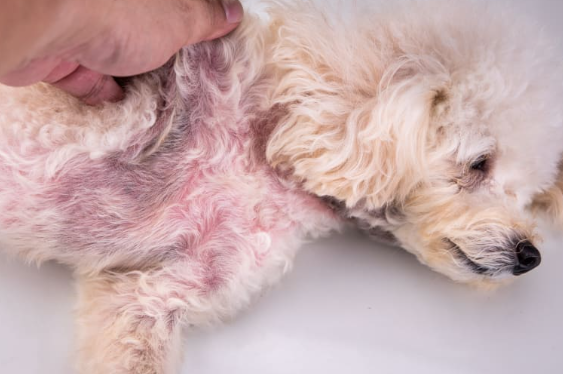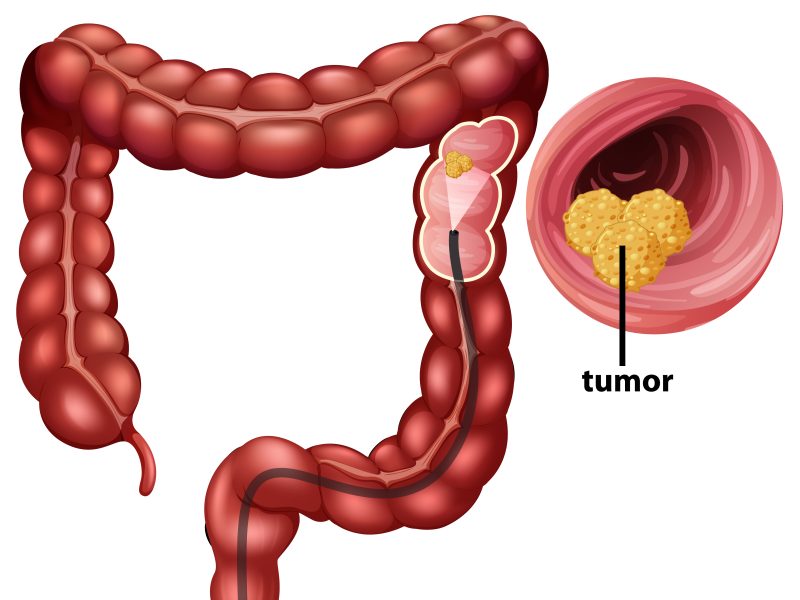Has your dog started shaking his head, licking his paws excessively, or scratching a lot? All of them are the symptoms of yeast infection in dogs, and they are uncomfortable. These problems are frequently caused by yeast infections in dogs’ paws or ears, under the armpits, skin folds, and your dog’s back. Since yeast is a fungus, an overgrowth of it is seen as a fungal infection. Although it is not communicable, it causes excruciating itching and worsens if left untreated.
Yeast Infection on Dog’s Skin
When the yeast typically found on your pet’s skin overproduces abnormally, dogs may get yeast infections on their skin or ears. Dogs’ bodies naturally contain yeast, a spore-producing fungus that rarely causes disease until it grows too much.
Yeast infections, known as “Malassezia dermatitis or Yeast Dermatitis,” typically affect a dog’s paw pads, skin folds, and ears. Your dog’s skin in the afflicted area may become red, inflamed, and itchy due to this ailment. If a dog’s ear infection is left untreated for an extended period, deafness may also result.
Dog Skin Yeast Infection Symptoms
How does a dog with yeast infection look? A few signs of yeast infection in dogs
and indicators that may point to a yeast ear infection or yeast dermatitis in your dog include:
- Scratching and itching
- The appearance of skin with deep pigmentation
- Scaly or flaky skin
- Skin sores
- Musty smell
- Skin texture alteration (elephant skin)
- Bald spots and hair loss
- Head swaying and quivering (yeast infection in the ears)
- Deafness due to ear yeast infection
Your dog’s diseased region will probably swell and smell musty first, along with other signs, including redness. However, these sensations can intensify fast enough to cause pain in the skin. Please make an appointment for your dog with your veterinarian as soon as you see any signs of a yeast infection in them.
Reasons for Yeast Ear Infections and Yeast Dog infection
Naturally present on your dog’s skin are yeast, germs, and fungi, but they rarely cause health problems. Nevertheless, opportunistic yeast infections may arise if your dog changes its skin condition or its immune system becomes less effective.
Yeast infection in dogs ears can be caused by several common factors, including:
- An immune system that is either too or underactive
- Allergens (such as mold, dust, dander, smoking, and cleaning supplies)
- foods heavy in carbohydrates and sugar
- Temperature and relative humidity
- Bad personal cleanliness
- retained moisture in paw pads, ears, or skin folds
- Bathing frequently (ear yeast infections)
- Swimming and yeast infections in the ears
- Object stuck in the ear, ear wax buildup, or discharge (yeast infections in the ear)
- Different types of ear drops
Dogs with Yeast Dermatitis: Treatment Options
The first thing you should do if you think your dog has yeast dermatitis or an ear infection is contact your veterinarian. The sooner the illness is treated, the quicker your dog will heal. Your dog’s veterinarian can identify the illness by cytology or culture, and they may also collect skin and hair samples from the vicinity of the affected area for further examination.
Your veterinarian will recommend an antifungal treatment, such as an ointment to the affected region or a medicated shampoo to relieve symptoms if your dog is diagnosed with a yeast infection. Your veterinarian could recommend oral medications like terbinafine, fluconazole, or ketoconazole if your dog’s illness is more severe.
Your dog may need complete ear canal ablation surgery if a yeast infection in its ear is the source of its deafness.
Home Treatments That Could Help Prevent Dog Ear Infections & Yeast Dermatitis
There are a few home remedies for yeast infections in dogs’ ears you can do to help keep your dog from getting a yeast infection, even though treating yeast infections should be done by a veterinarian to ensure there are no complications or secondary infections:
- drying your dog completely after a bath or water play
- Using a fresh towel or cotton ball, frequently remove dirt from your dog’s ears.
- Give your dog a nutritious food rich in protein and other elements.
- As part of their normal grooming regimen, brush your dog frequently to remove debris and dead skin.
Please note that the advice in this post is not meant to be medical advice for pets; rather, it is meant to be informative. Please schedule a visit with your veterinarian so that your pet’s condition can be accurately diagnosed.
Conclusion:
As a result, dogs’ health must identify and treat yeast infections as soon as possible. Common signs of discomfort include odor and itching; infections can worsen without treatment. Environmental factors and immune system modifications are among the causes. Veterinary consultation is essential for an accurate diagnosis, antifungal treatments, and, in more severe cases, oral drugs. Regular grooming and ample drying are examples of at-home routines that can enhance expert medication. Remember, this advice is meant to be instructive and should not be used instead of veterinary advice. See your veterinarian for a precise diagnosis and specially designed care for your animal companion.
Also Read: Baking soda bath for yeast infection work


